
tinyllm
Develop, evaluate and monitor LLM applications at scale
Stars: 90
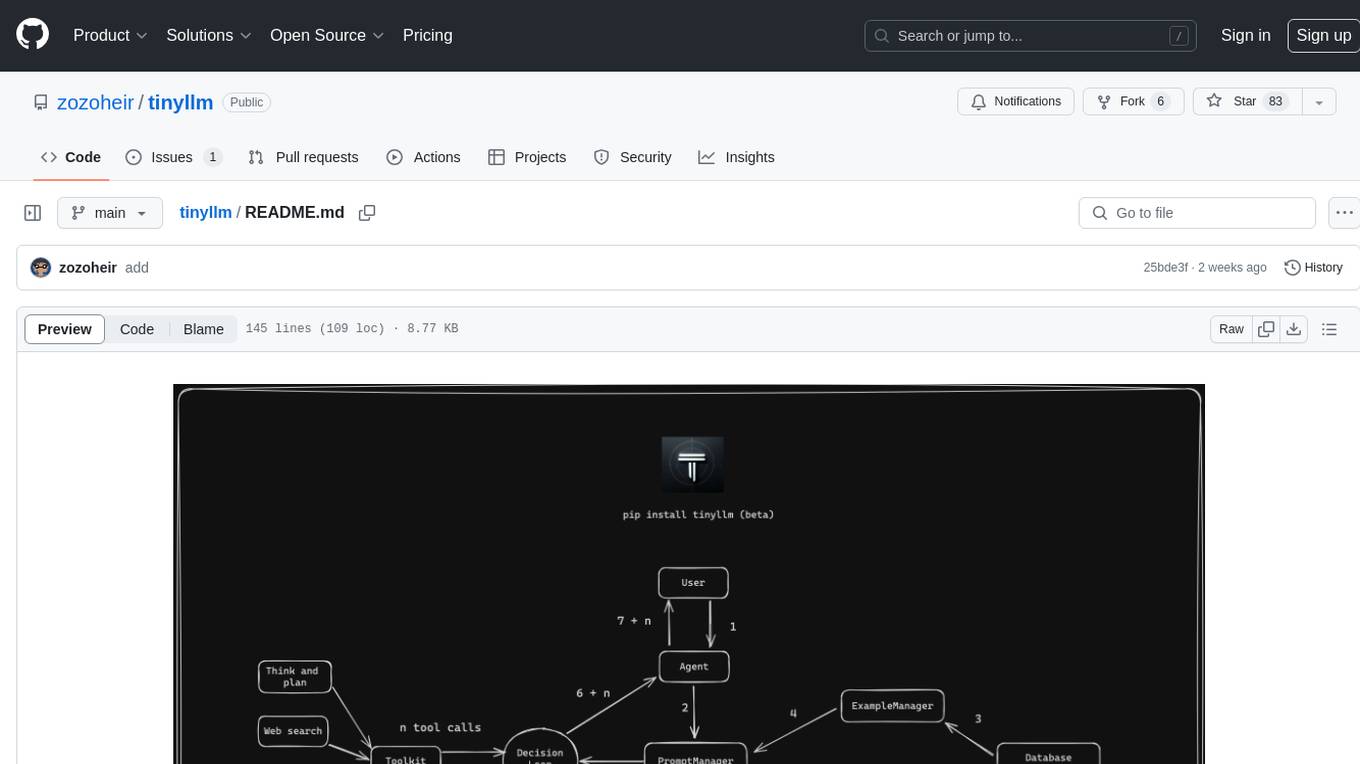
tinyllm is a lightweight framework designed for developing, debugging, and monitoring LLM and Agent powered applications at scale. It aims to simplify code while enabling users to create complex agents or LLM workflows in production. The core classes, Function and FunctionStream, standardize and control LLM, ToolStore, and relevant calls for scalable production use. It offers structured handling of function execution, including input/output validation, error handling, evaluation, and more, all while maintaining code readability. Users can create chains with prompts, LLM models, and evaluators in a single file without the need for extensive class definitions or spaghetti code. Additionally, tinyllm integrates with various libraries like Langfuse and provides tools for prompt engineering, observability, logging, and finite state machine design.
README:
tinyllm is a lightweight framework for developing, debugging and monitoring LLM and Agent powered applications at scale. The main goal of the library is to keep code as simple and readable as possible while allowing user to create complex agents or LLM workflows in production.
Function and its streaming equivalent FunctionStream are the core classes in tinyllm. They are designed to standardize and control LLM, ToolStore and any relevant calls for scalable production use in stream mode and otherwise.
It provides a structured approach to handle various aspects of function execution, including input/output validation, output processing, error handling, evaluation, all while keeping code readable. You can create a chain with its own prompt, LLM model and evaluators all in a single file. No need to jump through many class definitions, no spaghetti code. Any other library agent/chain (langchain/llama-index...) can also seamlessly be imported as a tinyllm Function.
pip install tinyllm
- LiteLLM integration: 20+ model providers available (OpenAI, Huggingface etc ...)
- Langfuse integration: Monitor trace and debug LLMs, Agents, Tools, RAG pipelines etc in structured run trees
- Agents: An agent is an LLM with Memory, a Toolkit and an ExampleManager
- ToolStore and Toolkits: let your Agent run python functions using ToolStore
- Example manager: constant examples + variable examples using and example selector with similarity search
- Memory: conversations history
- Retrieval Augmented Generation: RAG tools to search and generate answers
- Evaluation: Evaluators can be defined to evaluate and log the quality of the function's output in real-time
- PGVector store: PostgreSQL DB with the pgvector extension for vector storage.
- Prompt engineering tools: utility modules for prompt engineering, optimization and string formatting
- Layered validation: 3 validations happen during the Function lifecycle: input, output and output processing.
- IO Standardization: Maintains consistent response patterns and failure handling across different function implementations.
- Observability: Integrates with Langfuse for
- Logging: Records detailed logs for debugging and auditing purposes.
- Finite State Machine design: Manages the function's lifecycle through defined states, ensuring controlled and predictable execution.
class RiskScoreOutput(BaseModel):
risk_score: float
@tiny_function(output_model=RiskScoreOutput)
async def calculate_risk_score(bank_account_history: str, employment_history: str):
"""
<system>
Extract a Risk Score between 0 and 1 for a Credit Card application based on bank account and employment history.
</system>
<prompt>
Given the bank account history: {bank_account_history}
And the employment history: {employment_history}
Calculate the risk score for a credit card application.
</prompt>
"""
passMany of the LLM libraries today (langchain, llama-index, deep pavlov...) have made serious software design commitments which I believe were too early to make given the infancy of the industry. The goals of tinyllm are:
- Solve painpoints from current libraries: lack of composability (within + between libraries), complex software designs, code readability, debugging and logging.
- High level, robust abstractions: tinyllm is designed to be as simple as possible to use and integrate with existing and living codebases.
- Human and machine readable code to enable AI powered and autonomous chain development
LLM Functions are designed to behave like a web API. All Functions will always, even if failed, return a dictionary response.
Validations are defined through a Pydantic model and are provided to the Function using input_validator, output_validator and output_processing_validator args to a Function
tinyllm is integrated with Langfuse for tracing chains, functions and agents.
Configs are managed through a tinyllm.yaml file. It gets picked up at runtime in tinyllm.init and can be placed in any of /Documents, your root folder, or the current working directory. An empty tinyllm.yaml file is at the source of the repo to get you setup.
These tend to be confusing across the board. Here's a quick explanation:
- Concurrency : This means more than 1 Input/Ouput request at a time. Just like you can download 10 files concurrently on your web browser, you can call 10 APIs concurrently.
- Chaining : An ordered list of Functions where a Function's output is the input of the next Function in the chain.
- Parallelism : compute/calculations being performed on more than 1 process/CPU Core on the same machine. This is what model providers like OpenAI do using large GPU clusters (Nvidia, AMD...). This is used for "CPU Bound" tasks.
Tinyllm does not care about Parallelism. Parallelism is implemented by LLM providers on a GPU/CPU level and should be abstracted away using an LLM microservice. Tinyllm only cares about Concurrency, Chaining and organizing IO Bound tasks.
Finite state machine with predictable and controlled state transitions for easy debugging of your chains/compute graphs.
Below is the start and end of a trace for asking "What is the weather in Puerto Rico?" to an Agent with a get_weather Tool.
INFO | tinyllm.function | 2023-12-25 19:37:10,617 : [Standard example selector] transition to: States.INIT
INFO | tinyllm.function | 2023-12-25 19:37:12,720 : [BufferMemory] transition to: States.INIT
INFO | tinyllm.function | 2023-12-25 19:37:12,729 : [get_weather] transition to: States.INIT
INFO | tinyllm.function | 2023-12-25 19:37:12,729 : [Toolkit] transition to: States.INIT
INFO | tinyllm.function | 2023-12-25 19:37:12,731 : [LiteLLM] transition to: States.INIT
...
...
INFO | tinyllm.function | 2023-12-25 19:37:17,150 : [AnswerCorrectnessEvaluator] transition to: States.PROCESSING_OUTPUT
INFO | tinyllm.function | 2023-12-25 19:37:17,151 : [AnswerCorrectnessEvaluator] transition to: States.PROCESSED_OUTPUT_VALIDATION
INFO | tinyllm.function | 2023-12-25 19:37:17,151 : [AnswerCorrectnessEvaluator] transition to: States.COMPLETE
INFO | tinyllm.function | 2023-12-25 19:37:17,846 : [Agent] transition to: States.PROCESSING_OUTPUT
INFO | tinyllm.function | 2023-12-25 19:37:17,847 : [Agent] transition to: States.PROCESSED_OUTPUT_VALIDATION
INFO | tinyllm.function | 2023-12-25 19:37:17,847 : [Agent] transition to: States.COMPLETE
{'status': 'success', 'output': {'response': {'id': 'chatcmpl-8ZpjY0QmXbDiMIcSRwKuCUny4sxul', 'choices': [{'finish_reason': 'stop', 'index': 0, 'message': {'content': "It is 25 degrees celsius in Puerto Rico", 'role': 'assistant'}}], 'created': 1703551035, 'model': 'gpt-3.5-turbo-0613', 'object': 'chat.completion', 'system_fingerprint': None, 'usage': {'completion_tokens': 12, 'prompt_tokens': 138, 'total_tokens': 150}, '_response_ms': 785.606}}}
These tend to be confusing across the board. Here's a quick explanation:
- Concurrency : This means more than 1 Input/Ouput request at a time. Just like you can download 10 files concurrently on your web browser, you can call 10 APIs concurrently.
- Chaining : An ordered list of Functions where a Function's output is the input of the next Function in the chain.
- Parallelism : compute/calculations being performed on more than 1 process/CPU Core on the same machine. This is what model providers like OpenAI do using large GPU clusters (Nvidia, AMD...). This is used for "CPU Bound" tasks.
Tinyllm does not care about Parallelism. Parallelism is implemented by LLM providers on a GPU/CPU level and should be abstracted away using an LLM microservice. Tinyllm only cares about Concurrency, Chaining and organizing IO Bound tasks.
For Tasks:
Click tags to check more tools for each tasksFor Jobs:
Alternative AI tools for tinyllm
Similar Open Source Tools

tinyllm
tinyllm is a lightweight framework designed for developing, debugging, and monitoring LLM and Agent powered applications at scale. It aims to simplify code while enabling users to create complex agents or LLM workflows in production. The core classes, Function and FunctionStream, standardize and control LLM, ToolStore, and relevant calls for scalable production use. It offers structured handling of function execution, including input/output validation, error handling, evaluation, and more, all while maintaining code readability. Users can create chains with prompts, LLM models, and evaluators in a single file without the need for extensive class definitions or spaghetti code. Additionally, tinyllm integrates with various libraries like Langfuse and provides tools for prompt engineering, observability, logging, and finite state machine design.
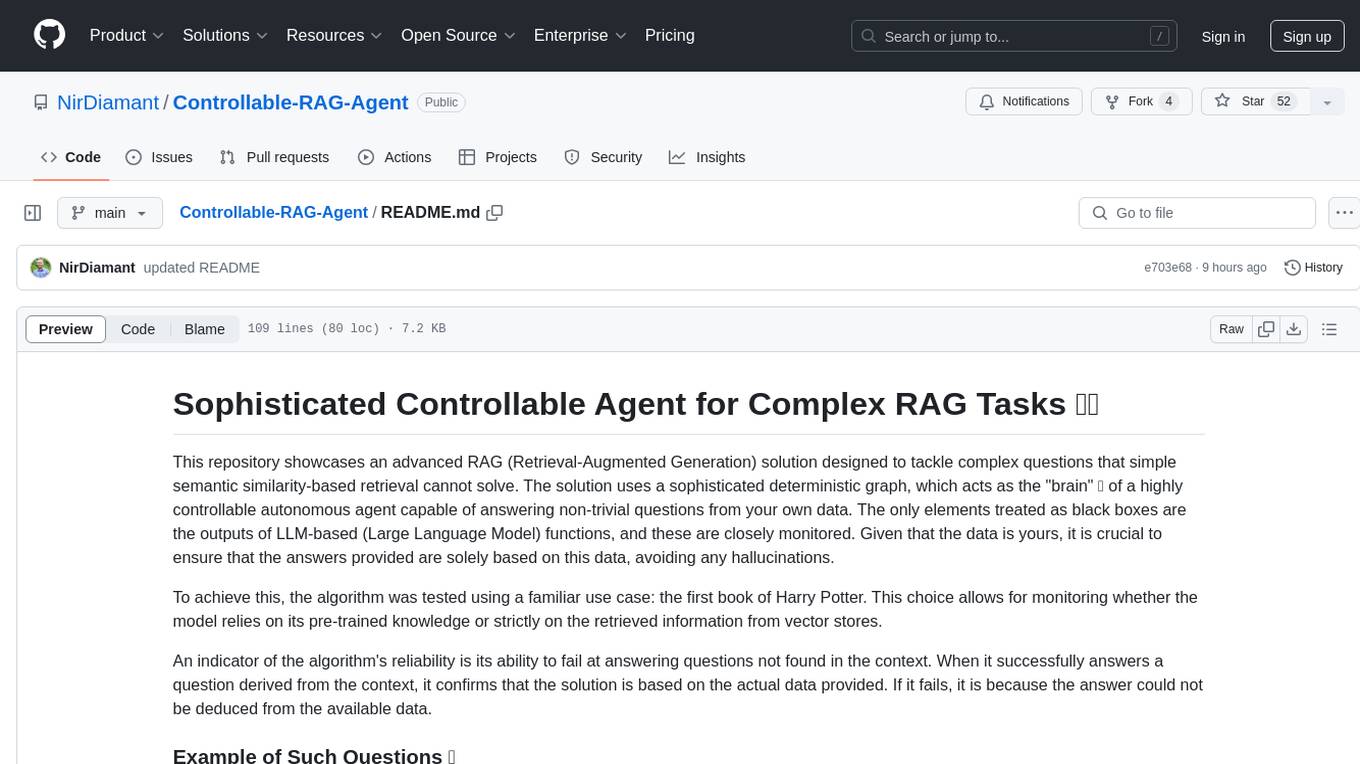
Controllable-RAG-Agent
This repository contains a sophisticated deterministic graph-based solution for answering complex questions using a controllable autonomous agent. The solution is designed to ensure that answers are solely based on the provided data, avoiding hallucinations. It involves various steps such as PDF loading, text preprocessing, summarization, database creation, encoding, and utilizing large language models. The algorithm follows a detailed workflow involving planning, retrieval, answering, replanning, content distillation, and performance evaluation. Heuristics and techniques implemented focus on content encoding, anonymizing questions, task breakdown, content distillation, chain of thought answering, verification, and model performance evaluation.
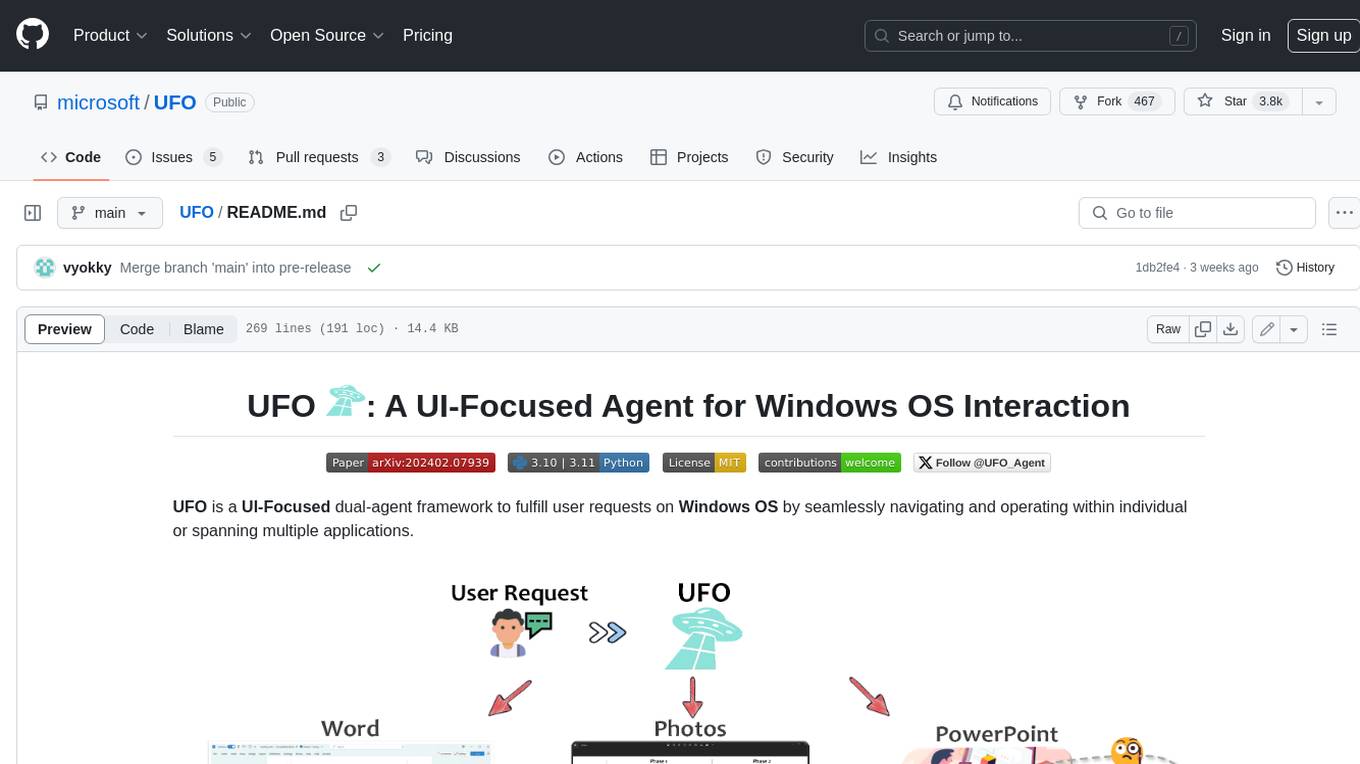
UFO
UFO is a UI-focused dual-agent framework to fulfill user requests on Windows OS by seamlessly navigating and operating within individual or spanning multiple applications.
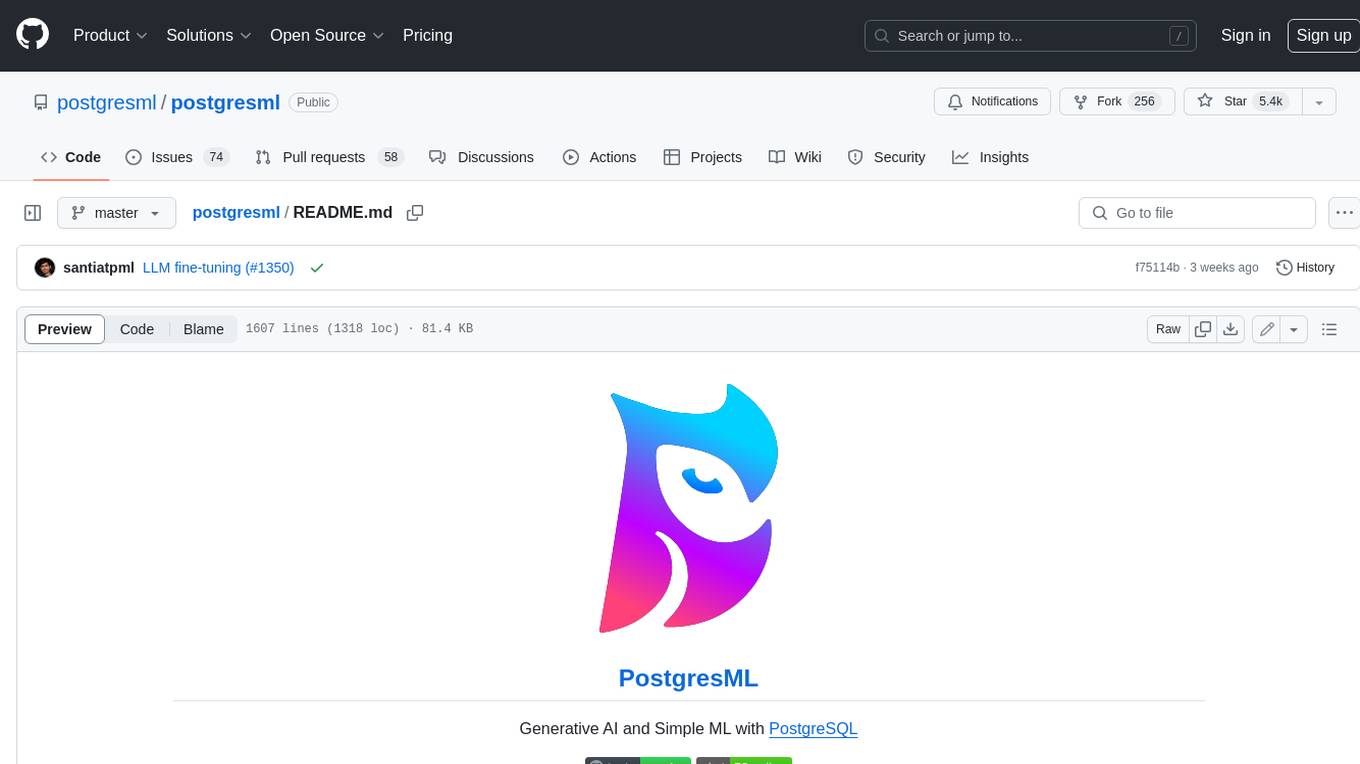
postgresml
PostgresML is a powerful Postgres extension that seamlessly combines data storage and machine learning inference within your database. It enables running machine learning and AI operations directly within PostgreSQL, leveraging GPU acceleration for faster computations, integrating state-of-the-art large language models, providing built-in functions for text processing, enabling efficient similarity search, offering diverse ML algorithms, ensuring high performance, scalability, and security, supporting a wide range of NLP tasks, and seamlessly integrating with existing PostgreSQL tools and client libraries.
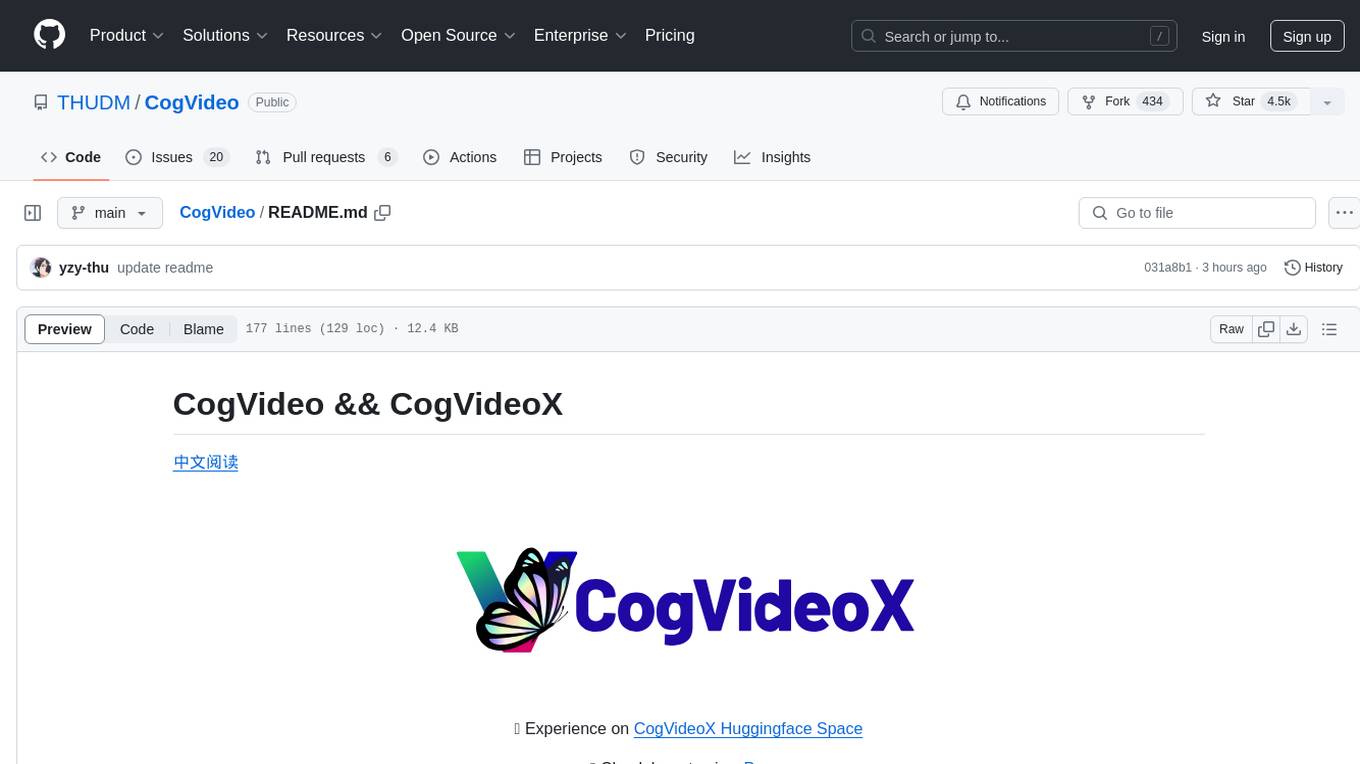
CogVideo
CogVideo is an open-source repository that provides pretrained text-to-video models for generating videos based on input text. It includes models like CogVideoX-2B and CogVideo, offering powerful video generation capabilities. The repository offers tools for inference, fine-tuning, and model conversion, along with demos showcasing the model's capabilities through CLI, web UI, and online experiences. CogVideo aims to facilitate the creation of high-quality videos from textual descriptions, catering to a wide range of applications.
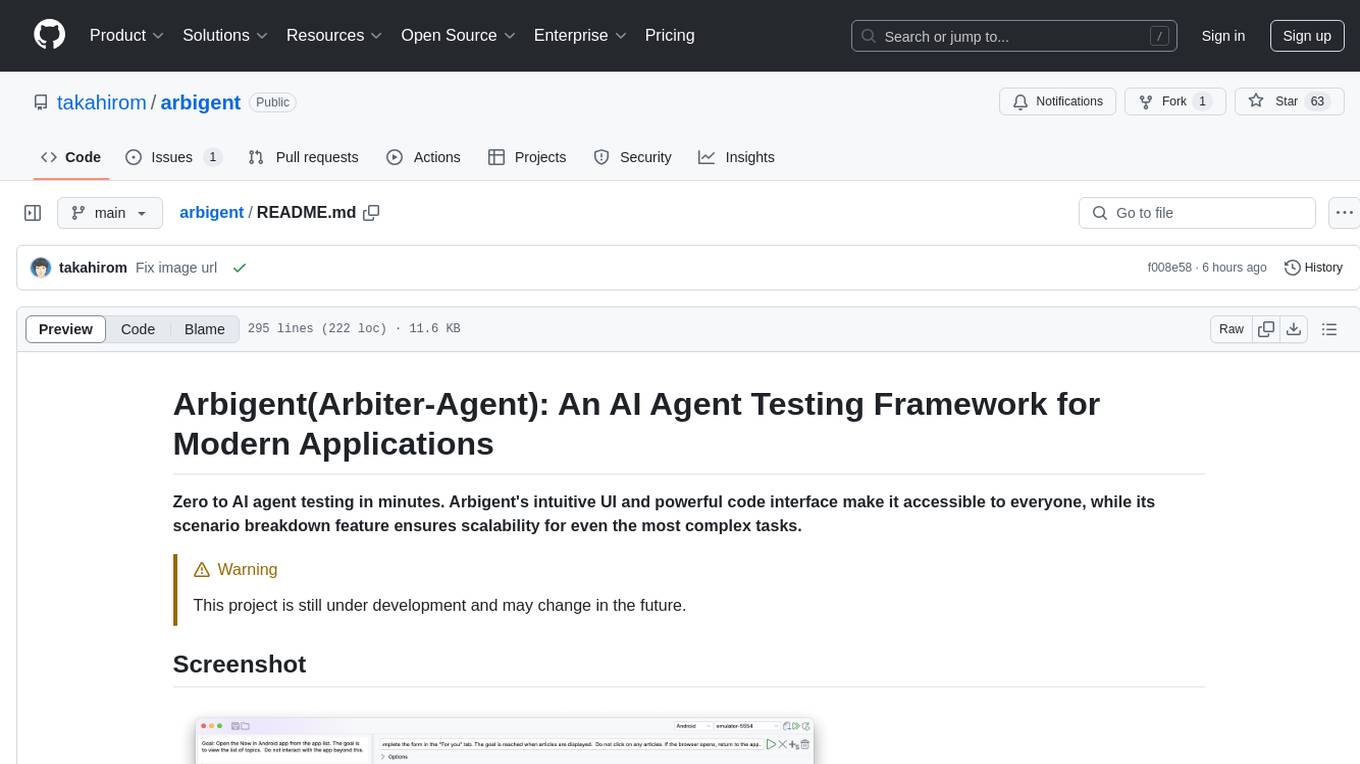
arbigent
Arbigent (Arbiter-Agent) is an AI agent testing framework designed to make AI agent testing practical for modern applications. It addresses challenges faced by traditional UI testing frameworks and AI agents by breaking down complex tasks into smaller, dependent scenarios. The framework is customizable for various AI providers, operating systems, and form factors, empowering users with extensive customization capabilities. Arbigent offers an intuitive UI for scenario creation and a powerful code interface for seamless test execution. It supports multiple form factors, optimizes UI for AI interaction, and is cost-effective by utilizing models like GPT-4o mini. With a flexible code interface and open-source nature, Arbigent aims to revolutionize AI agent testing in modern applications.
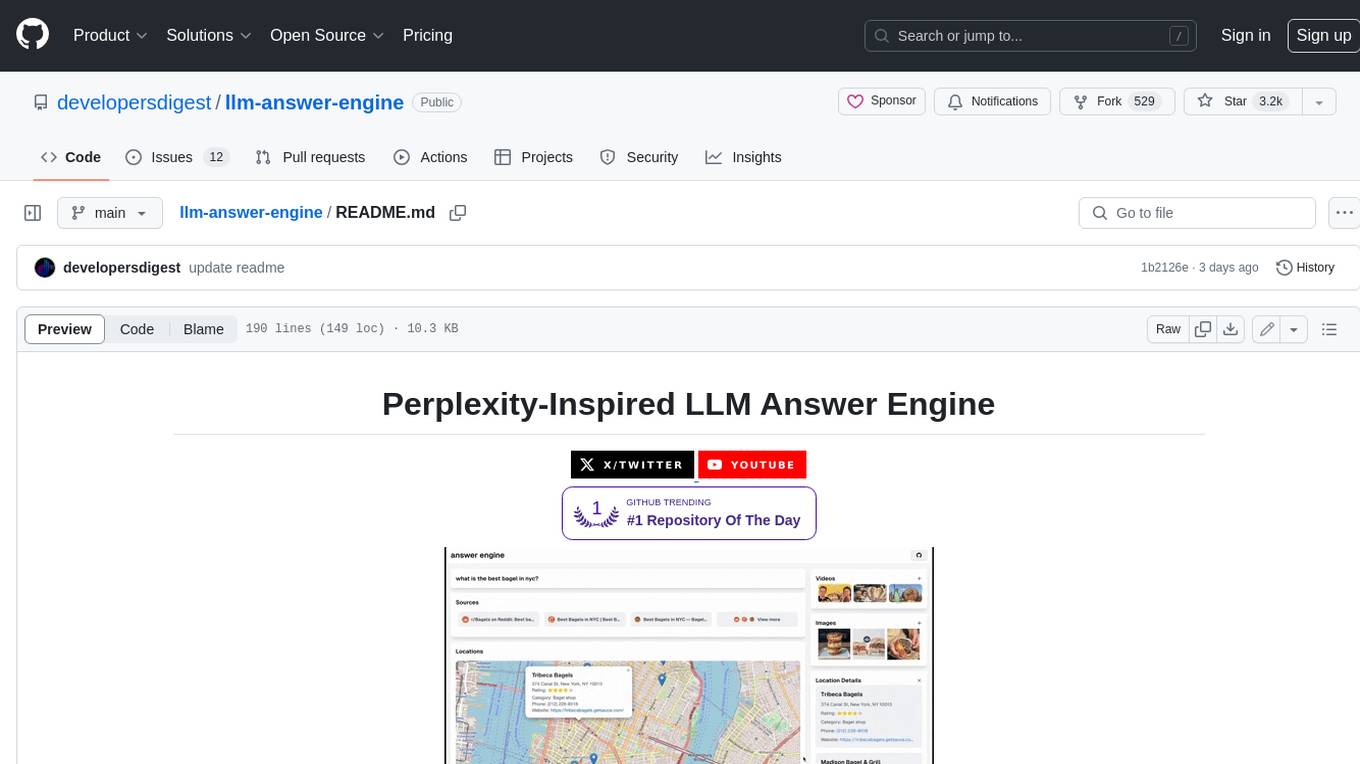
llm-answer-engine
This repository contains the code and instructions needed to build a sophisticated answer engine that leverages the capabilities of Groq, Mistral AI's Mixtral, Langchain.JS, Brave Search, Serper API, and OpenAI. Designed to efficiently return sources, answers, images, videos, and follow-up questions based on user queries, this project is an ideal starting point for developers interested in natural language processing and search technologies.
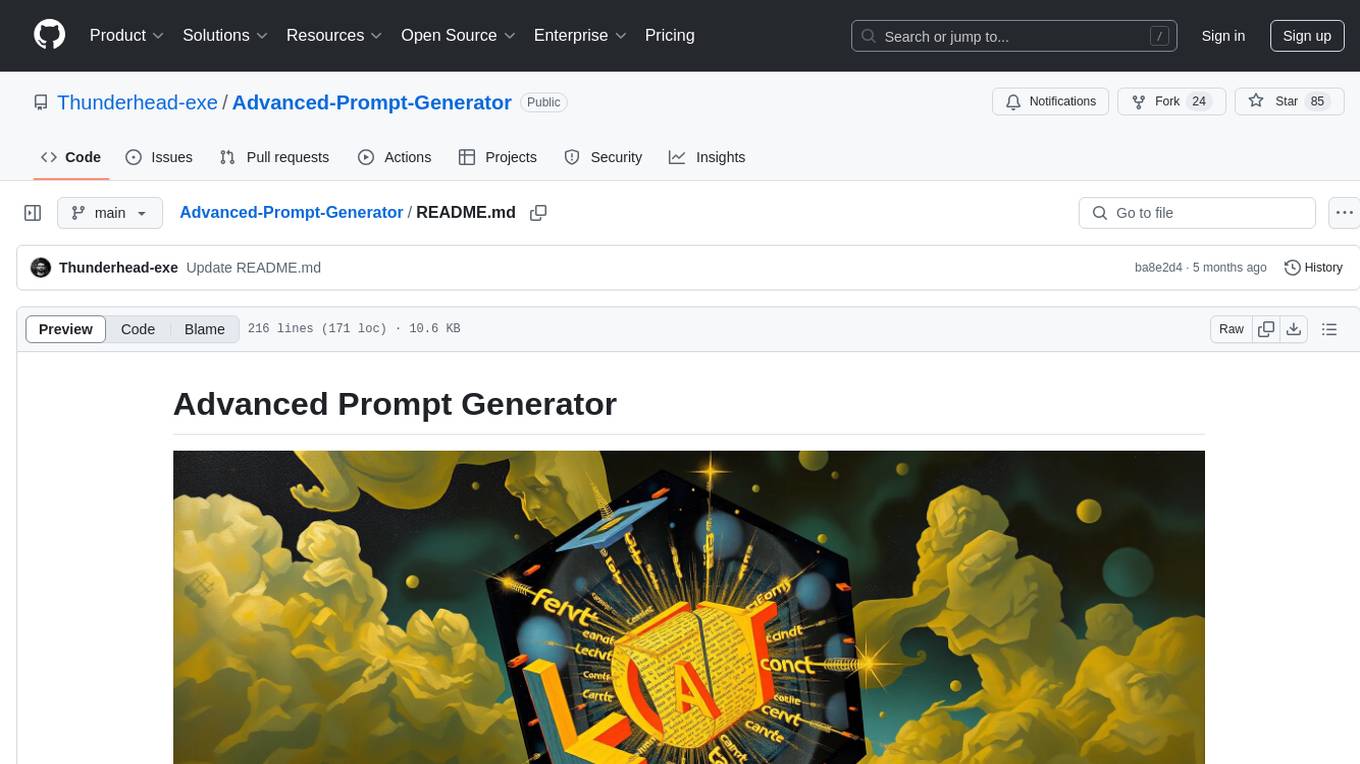
Advanced-Prompt-Generator
This project is an LLM-based Advanced Prompt Generator designed to automate the process of prompt engineering by enhancing given input prompts using large language models (LLMs). The tool can generate advanced prompts with minimal user input, leveraging LLM agents for optimized prompt generation. It supports gpt-4o or gpt-4o-mini, offers FastAPI & Docker deployment for efficiency, provides a Gradio interface for easy testing, and is hosted on Hugging Face Spaces for quick demos. Users can expand model support to offer more variety and flexibility.
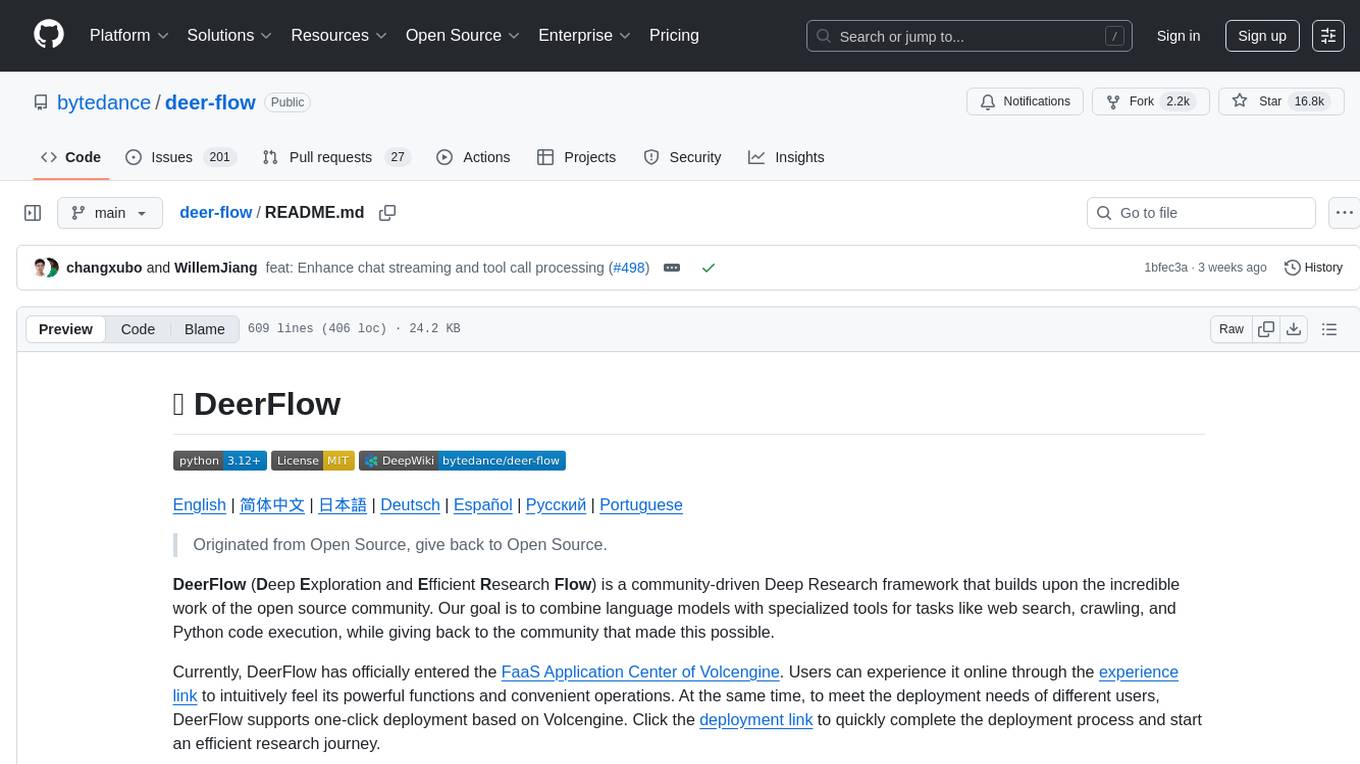
deer-flow
DeerFlow is a community-driven Deep Research framework that combines language models with specialized tools for tasks like web search, crawling, and Python code execution. It supports FaaS deployment and one-click deployment based on Volcengine. The framework includes core capabilities like LLM integration, search and retrieval, RAG integration, MCP seamless integration, human collaboration, report post-editing, and content creation. The architecture is based on a modular multi-agent system with components like Coordinator, Planner, Research Team, and Text-to-Speech integration. DeerFlow also supports interactive mode, human-in-the-loop mechanism, and command-line arguments for customization.
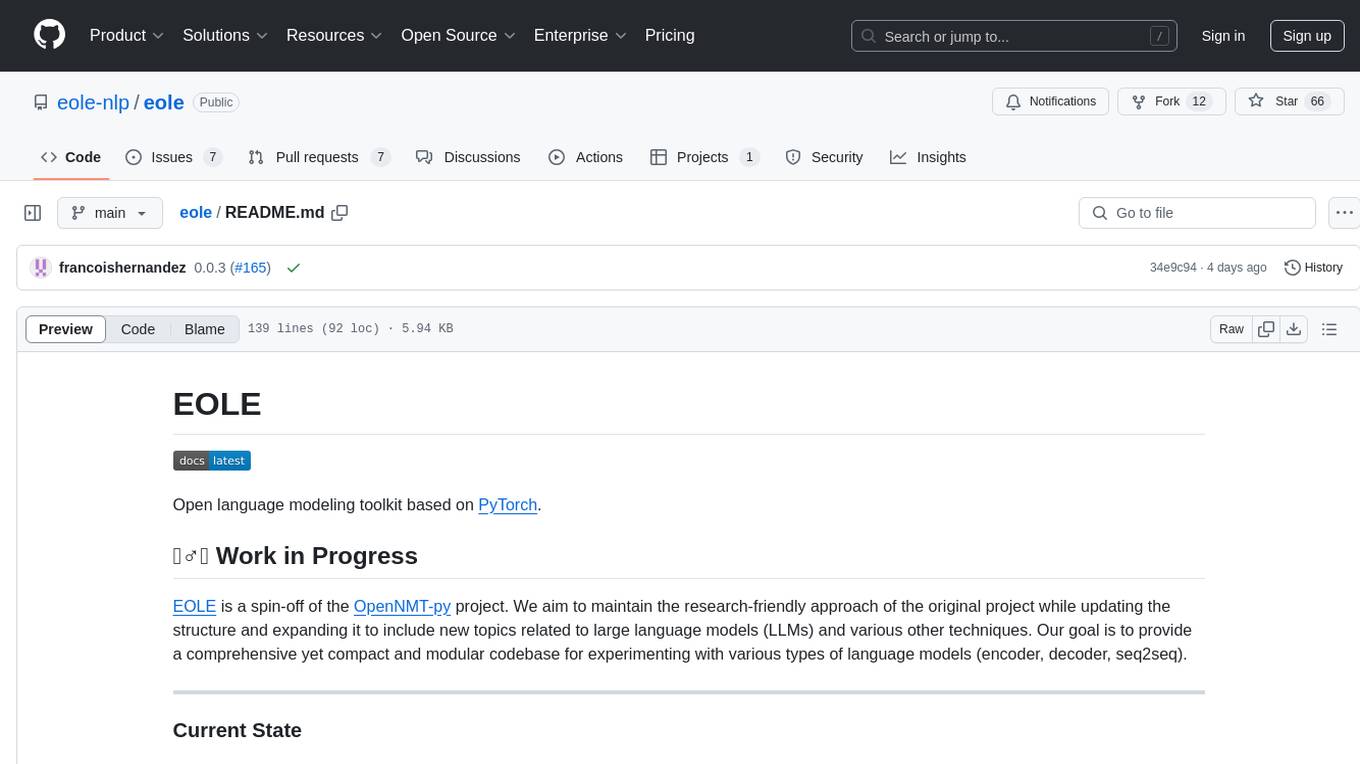
eole
EOLE is an open language modeling toolkit based on PyTorch. It aims to provide a research-friendly approach with a comprehensive yet compact and modular codebase for experimenting with various types of language models. The toolkit includes features such as versatile training and inference, dynamic data transforms, comprehensive large language model support, advanced quantization, efficient finetuning, flexible inference, and tensor parallelism. EOLE is a work in progress with ongoing enhancements in configuration management, command line entry points, reproducible recipes, core API simplification, and plans for further simplification, refactoring, inference server development, additional recipes, documentation enhancement, test coverage improvement, logging enhancements, and broader model support.
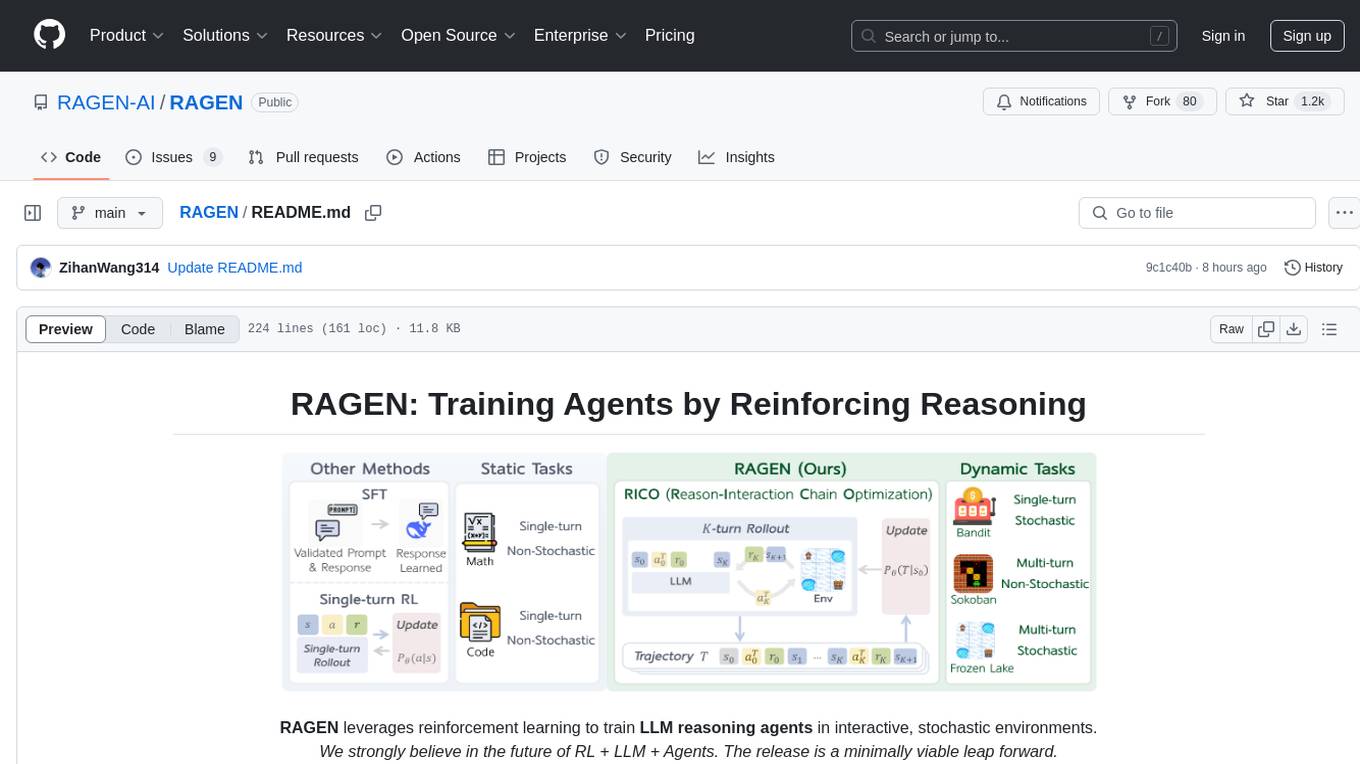
RAGEN
RAGEN is a reinforcement learning framework designed to train reasoning-capable large language model (LLM) agents in interactive, stochastic environments. It addresses challenges such as multi-turn interactions and stochastic environments through a Markov Decision Process (MDP) formulation, Reason-Interaction Chain Optimization (RICO) algorithm, and progressive reward normalization strategies. The framework consists of MDP formulation, RICO algorithm with rollout and update stages, and reward normalization strategies to stabilize training. RAGEN aims to optimize reasoning and action strategies for LLM agents operating in complex environments.
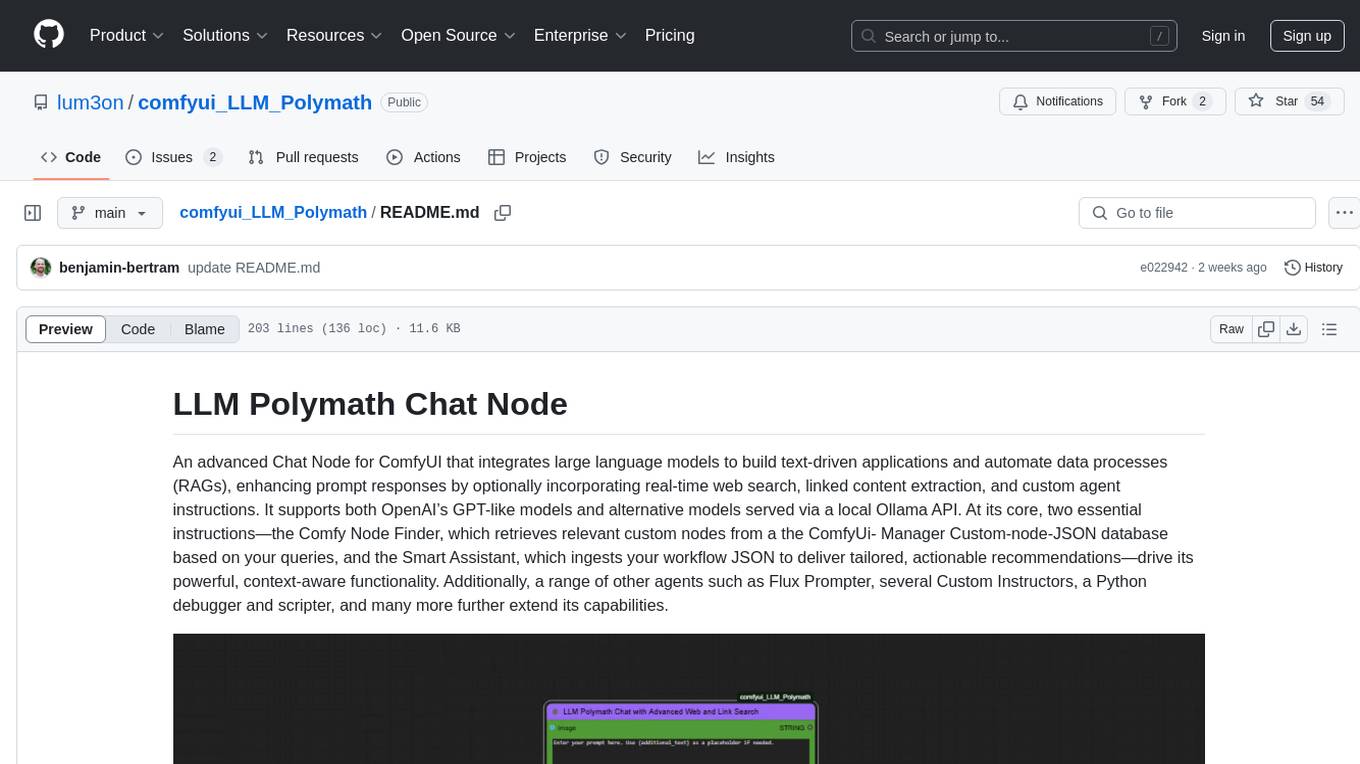
comfyui_LLM_Polymath
LLM Polymath Chat Node is an advanced Chat Node for ComfyUI that integrates large language models to build text-driven applications and automate data processes, enhancing prompt responses by incorporating real-time web search, linked content extraction, and custom agent instructions. It supports both OpenAI’s GPT-like models and alternative models served via a local Ollama API. The core functionalities include Comfy Node Finder and Smart Assistant, along with additional agents like Flux Prompter, Custom Instructors, Python debugger, and scripter. The tool offers features for prompt processing, web search integration, model & API integration, custom instructions, image handling, logging & debugging, output compression, and more.
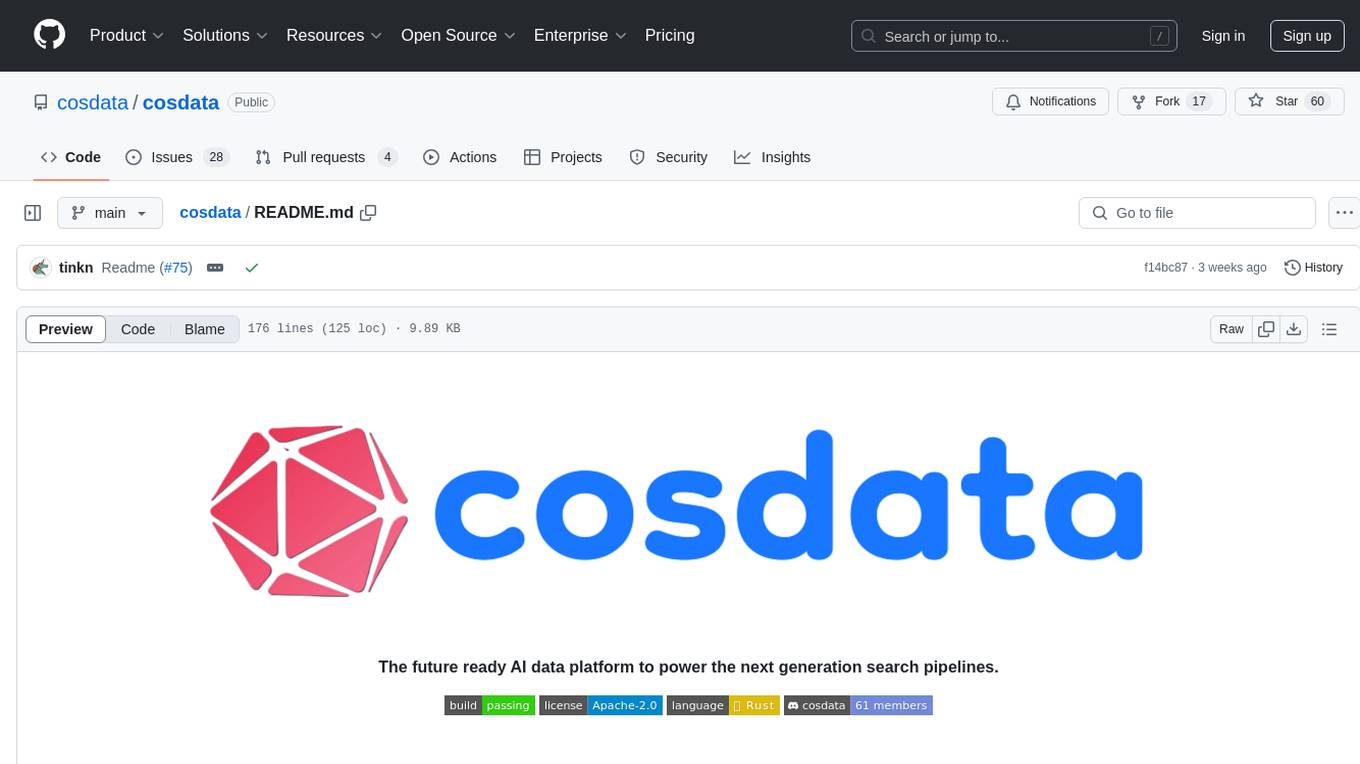
cosdata
Cosdata is a cutting-edge AI data platform designed to power the next generation search pipelines. It features immutability, version control, and excels in semantic search, structured knowledge graphs, hybrid search capabilities, real-time search at scale, and ML pipeline integration. The platform is customizable, scalable, efficient, enterprise-grade, easy to use, and can manage multi-modal data. It offers high performance, indexing, low latency, and high requests per second. Cosdata is designed to meet the demands of modern search applications, empowering businesses to harness the full potential of their data.
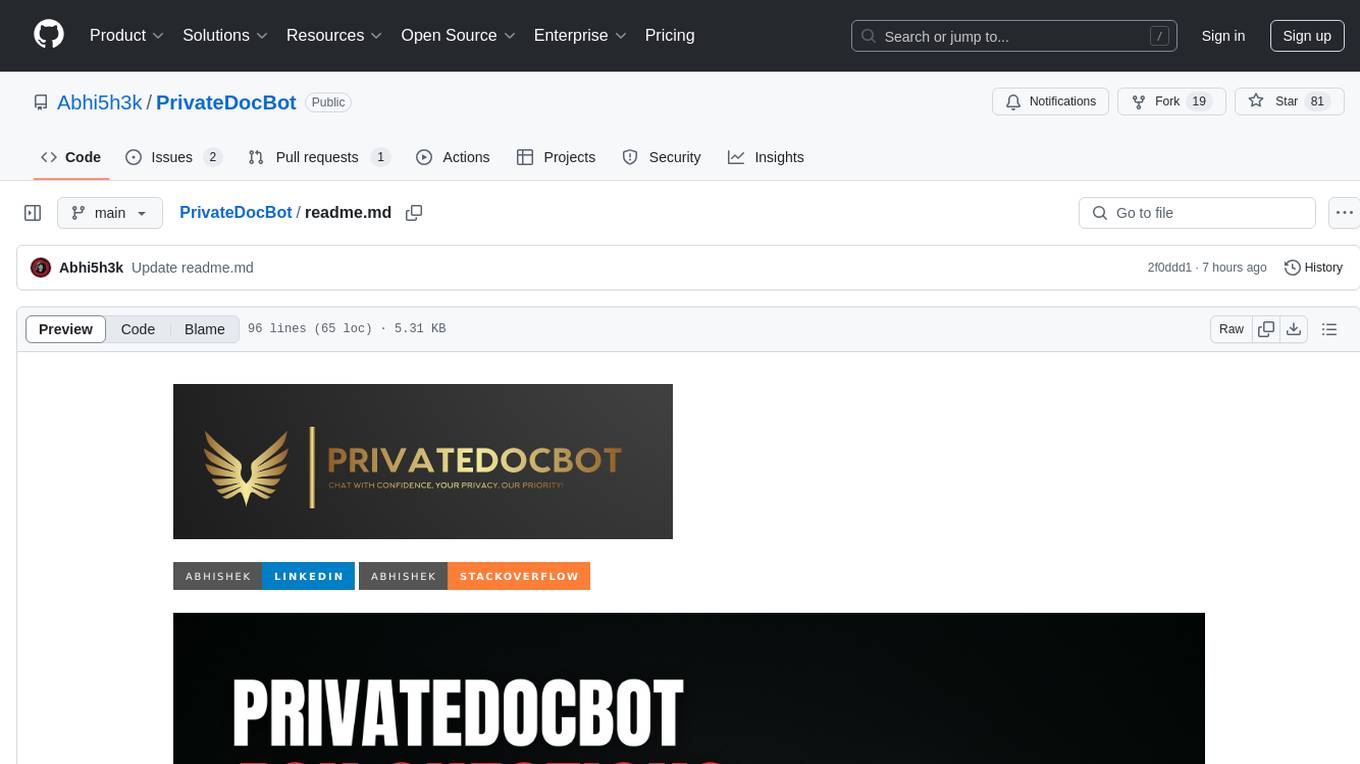
PrivateDocBot
PrivateDocBot is a local LLM-powered chatbot designed for secure document interactions. It seamlessly merges Chainlit user-friendly interface with localized language models, tailored for sensitive data. The project streamlines data access by deciphering intricate user guides and extracting vital insights from complex PDF reports. Equipped with advanced technology, it offers an engaging conversational experience, redefining data interaction and empowering users with control.
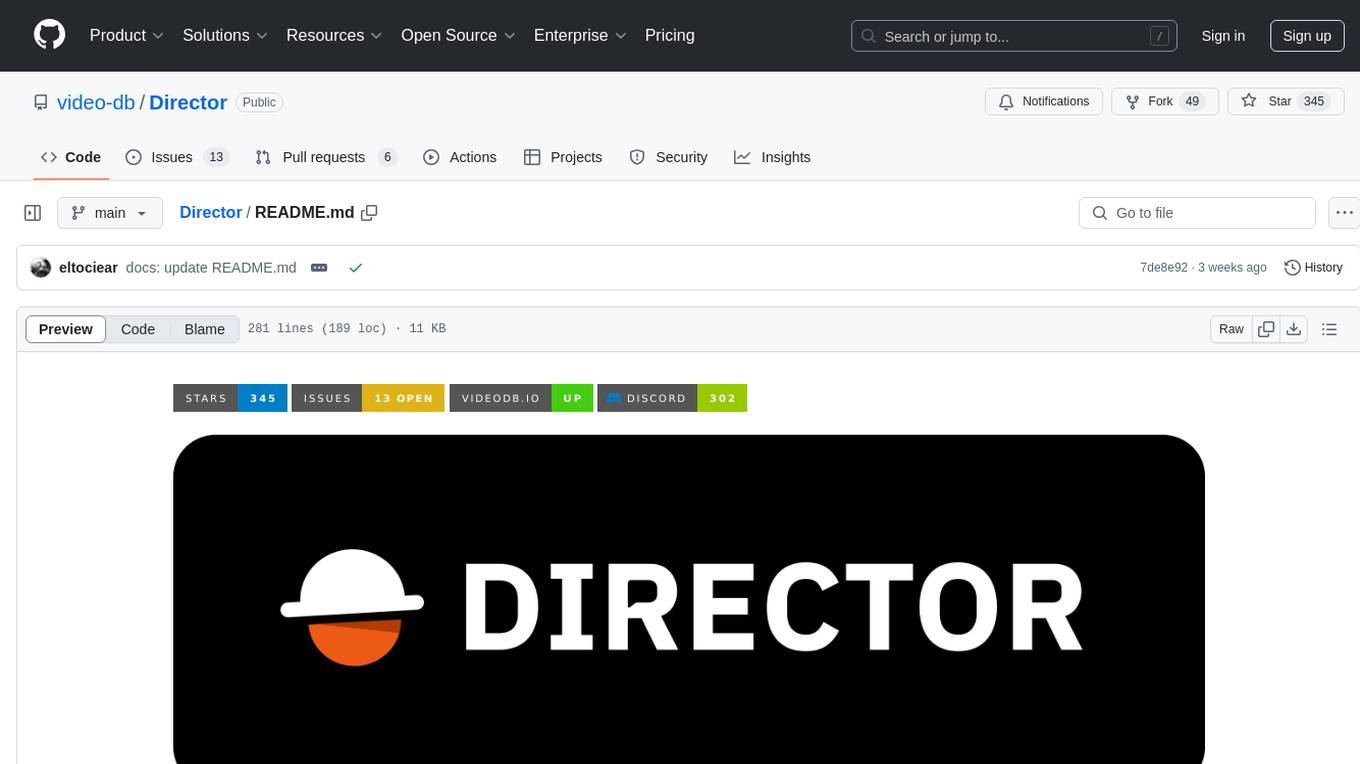
Director
Director is a framework to build video agents that can reason through complex video tasks like search, editing, compilation, generation, etc. It enables users to summarize videos, search for specific moments, create clips instantly, integrate GenAI projects and APIs, add overlays, generate thumbnails, and more. Built on VideoDB's 'video-as-data' infrastructure, Director is perfect for developers, creators, and teams looking to simplify media workflows and unlock new possibilities.
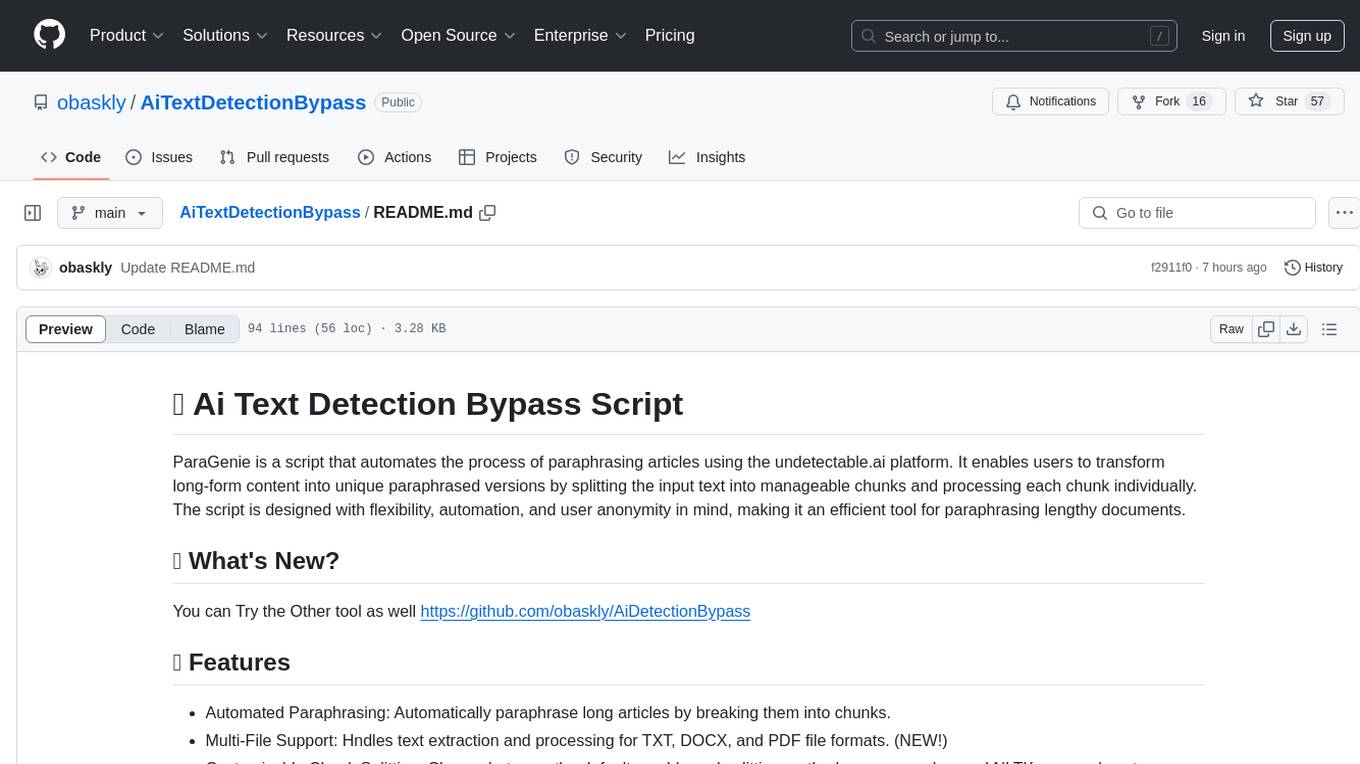
AiTextDetectionBypass
ParaGenie is a script designed to automate the process of paraphrasing articles using the undetectable.ai platform. It allows users to convert lengthy content into unique paraphrased versions by splitting the input text into manageable chunks and processing each chunk individually. The script offers features such as automated paraphrasing, multi-file support for TXT, DOCX, and PDF formats, customizable chunk splitting methods, Gmail-based registration for seamless paraphrasing, purpose-specific writing support, readability level customization, anonymity features for user privacy, error handling and recovery, and output management for easy access and organization of paraphrased content.
For similar tasks
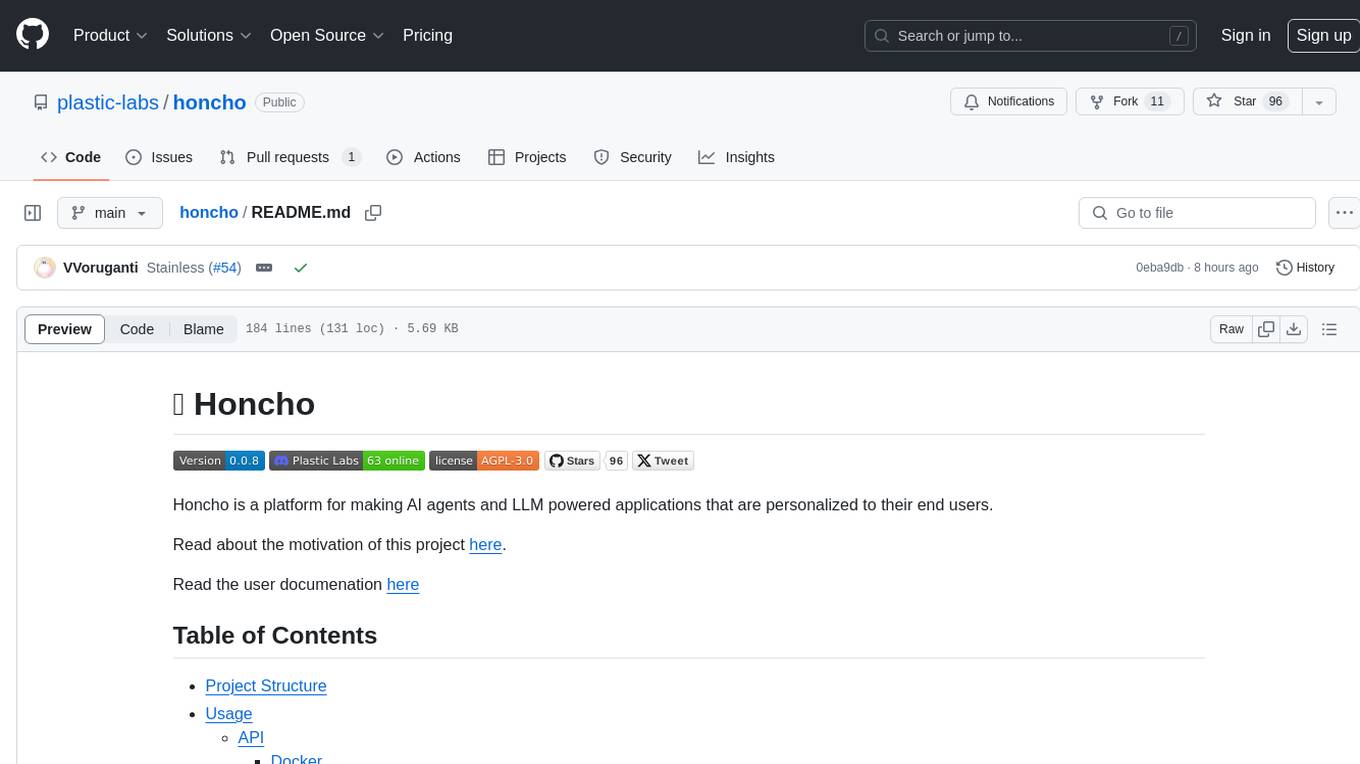
honcho
Honcho is a platform for creating personalized AI agents and LLM powered applications for end users. The repository is a monorepo containing the server/API for managing database interactions and storing application state, along with a Python SDK. It utilizes FastAPI for user context management and Poetry for dependency management. The API can be run using Docker or manually by setting environment variables. The client SDK can be installed using pip or Poetry. The project is open source and welcomes contributions, following a fork and PR workflow. Honcho is licensed under the AGPL-3.0 License.
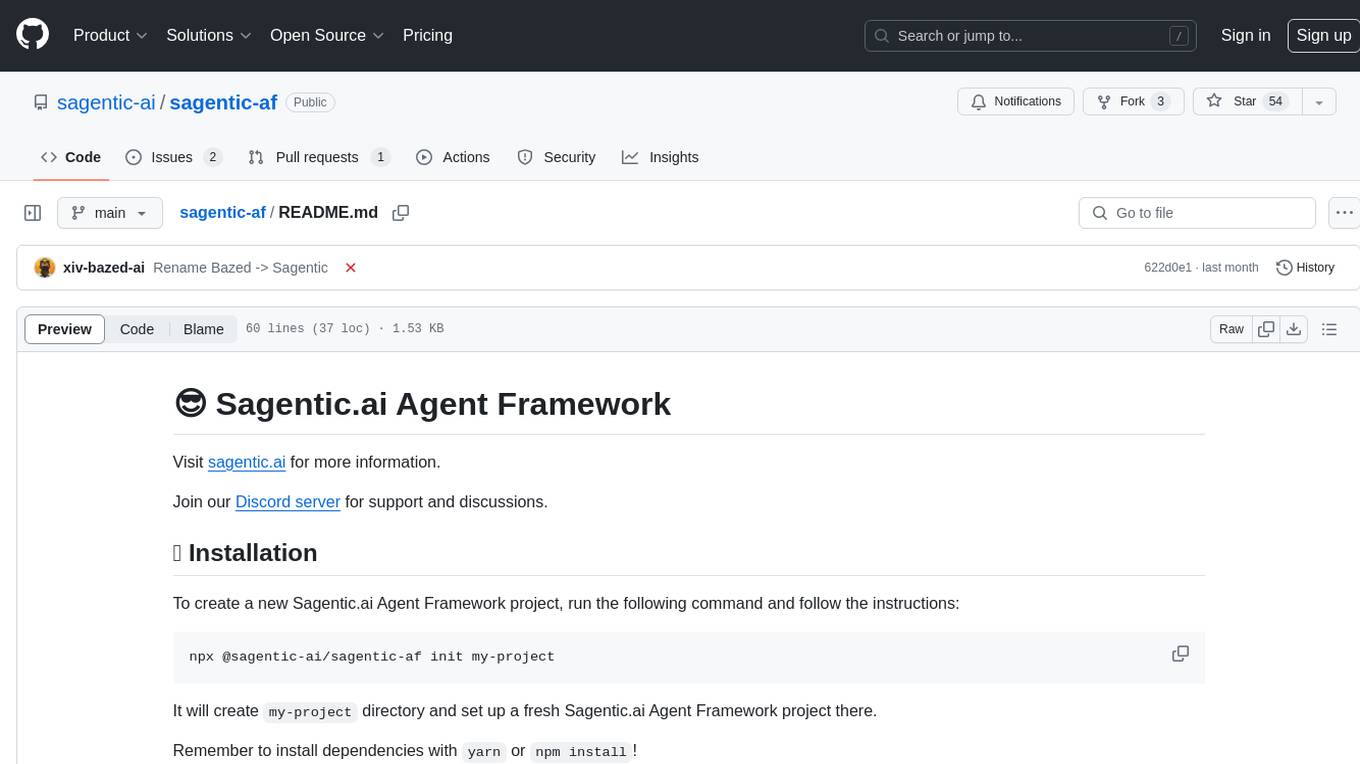
sagentic-af
Sagentic.ai Agent Framework is a tool for creating AI agents with hot reloading dev server. It allows users to spawn agents locally by calling specific endpoint. The framework comes with detailed documentation and supports contributions, issues, and feature requests. It is MIT licensed and maintained by Ahyve Inc.

tinyllm
tinyllm is a lightweight framework designed for developing, debugging, and monitoring LLM and Agent powered applications at scale. It aims to simplify code while enabling users to create complex agents or LLM workflows in production. The core classes, Function and FunctionStream, standardize and control LLM, ToolStore, and relevant calls for scalable production use. It offers structured handling of function execution, including input/output validation, error handling, evaluation, and more, all while maintaining code readability. Users can create chains with prompts, LLM models, and evaluators in a single file without the need for extensive class definitions or spaghetti code. Additionally, tinyllm integrates with various libraries like Langfuse and provides tools for prompt engineering, observability, logging, and finite state machine design.
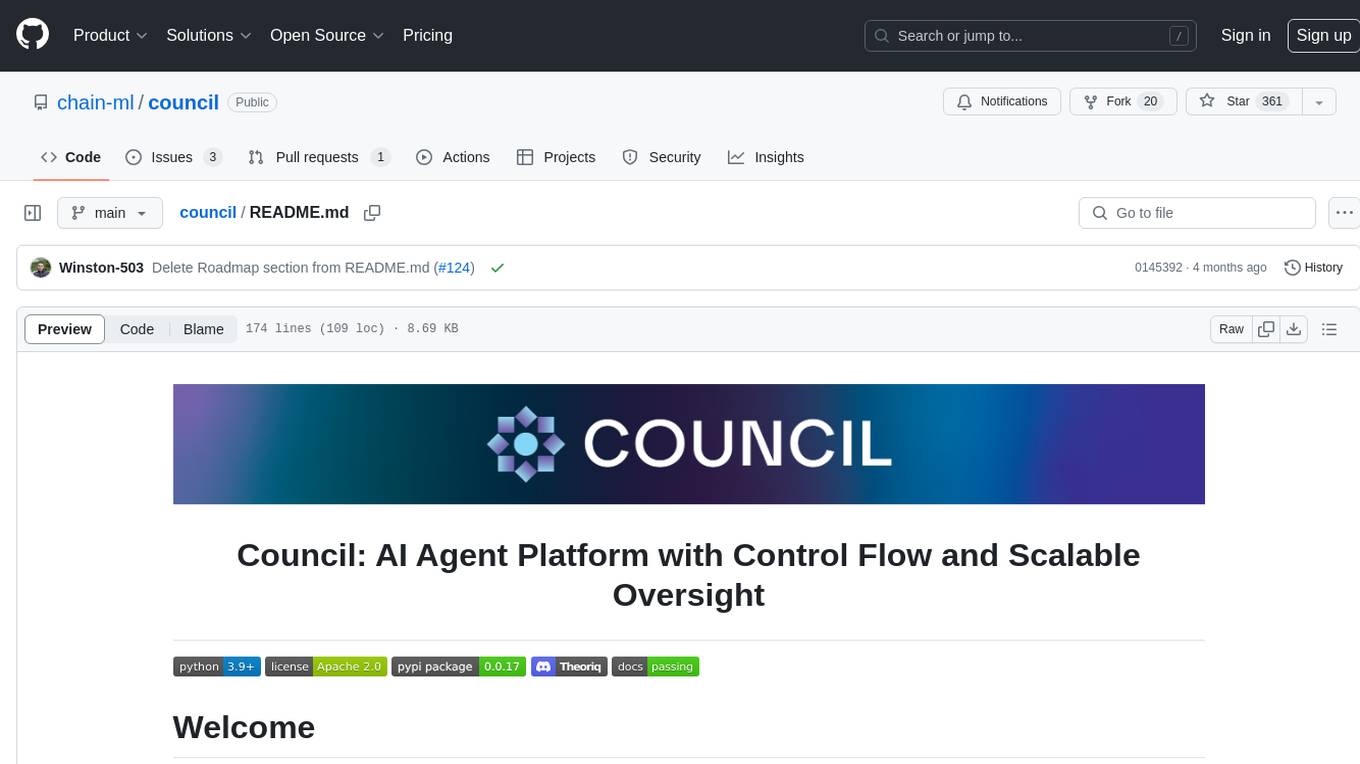
council
Council is an open-source platform designed for the rapid development and deployment of customized generative AI applications using teams of agents. It extends the LLM tool ecosystem by providing advanced control flow and scalable oversight for AI agents. Users can create sophisticated agents with predictable behavior by leveraging Council's powerful approach to control flow using Controllers, Filters, Evaluators, and Budgets. The framework allows for automated routing between agents, comparing, evaluating, and selecting the best results for a task. Council aims to facilitate packaging and deploying agents at scale on multiple platforms while enabling enterprise-grade monitoring and quality control.
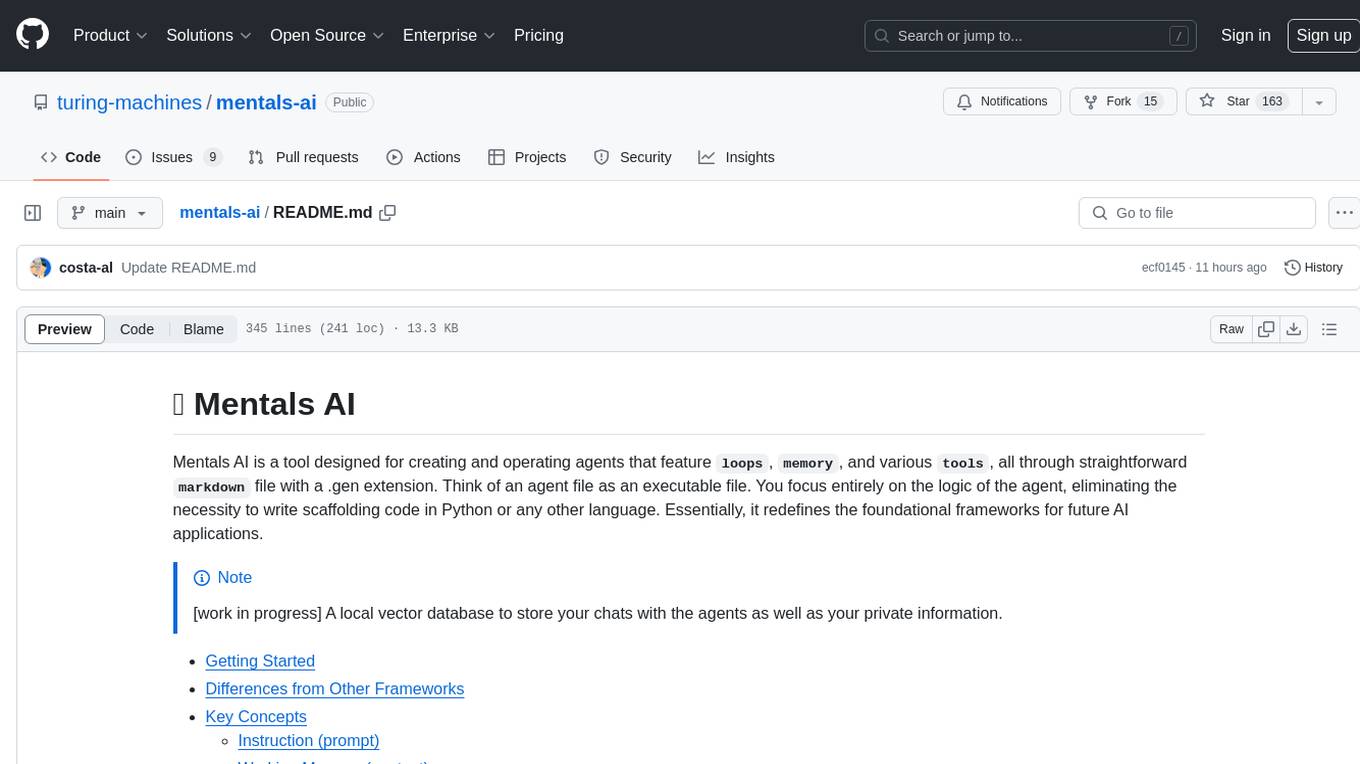
mentals-ai
Mentals AI is a tool designed for creating and operating agents that feature loops, memory, and various tools, all through straightforward markdown syntax. This tool enables you to concentrate solely on the agent’s logic, eliminating the necessity to compose underlying code in Python or any other language. It redefines the foundational frameworks for future AI applications by allowing the creation of agents with recursive decision-making processes, integration of reasoning frameworks, and control flow expressed in natural language. Key concepts include instructions with prompts and references, working memory for context, short-term memory for storing intermediate results, and control flow from strings to algorithms. The tool provides a set of native tools for message output, user input, file handling, Python interpreter, Bash commands, and short-term memory. The roadmap includes features like a web UI, vector database tools, agent's experience, and tools for image generation and browsing. The idea behind Mentals AI originated from studies on psychoanalysis executive functions and aims to integrate 'System 1' (cognitive executor) with 'System 2' (central executive) to create more sophisticated agents.
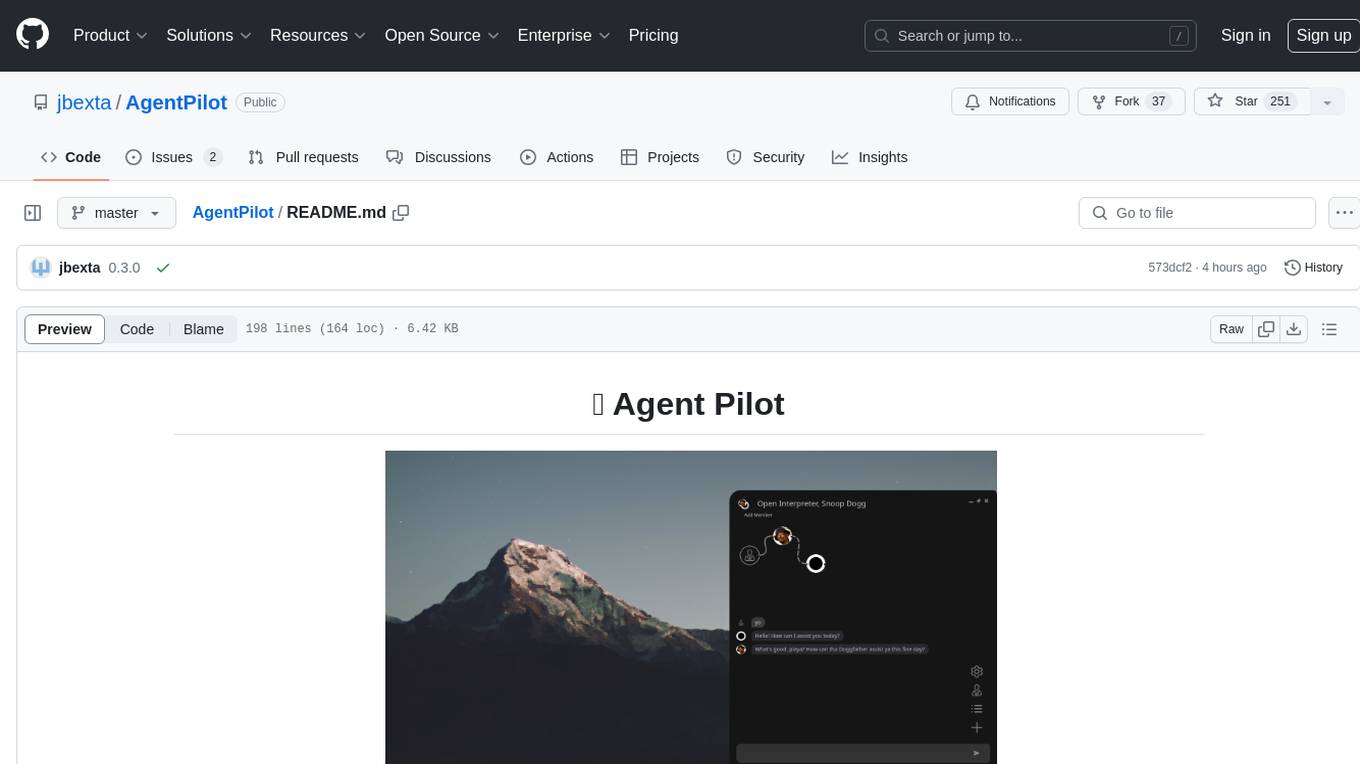
AgentPilot
Agent Pilot is an open source desktop app for creating, managing, and chatting with AI agents. It features multi-agent, branching chats with various providers through LiteLLM. Users can combine models from different providers, configure interactions, and run code using the built-in Open Interpreter. The tool allows users to create agents, manage chats, work with multi-agent workflows, branching workflows, context blocks, tools, and plugins. It also supports a code interpreter, scheduler, voice integration, and integration with various AI providers. Contributions to the project are welcome, and users can report known issues for improvement.
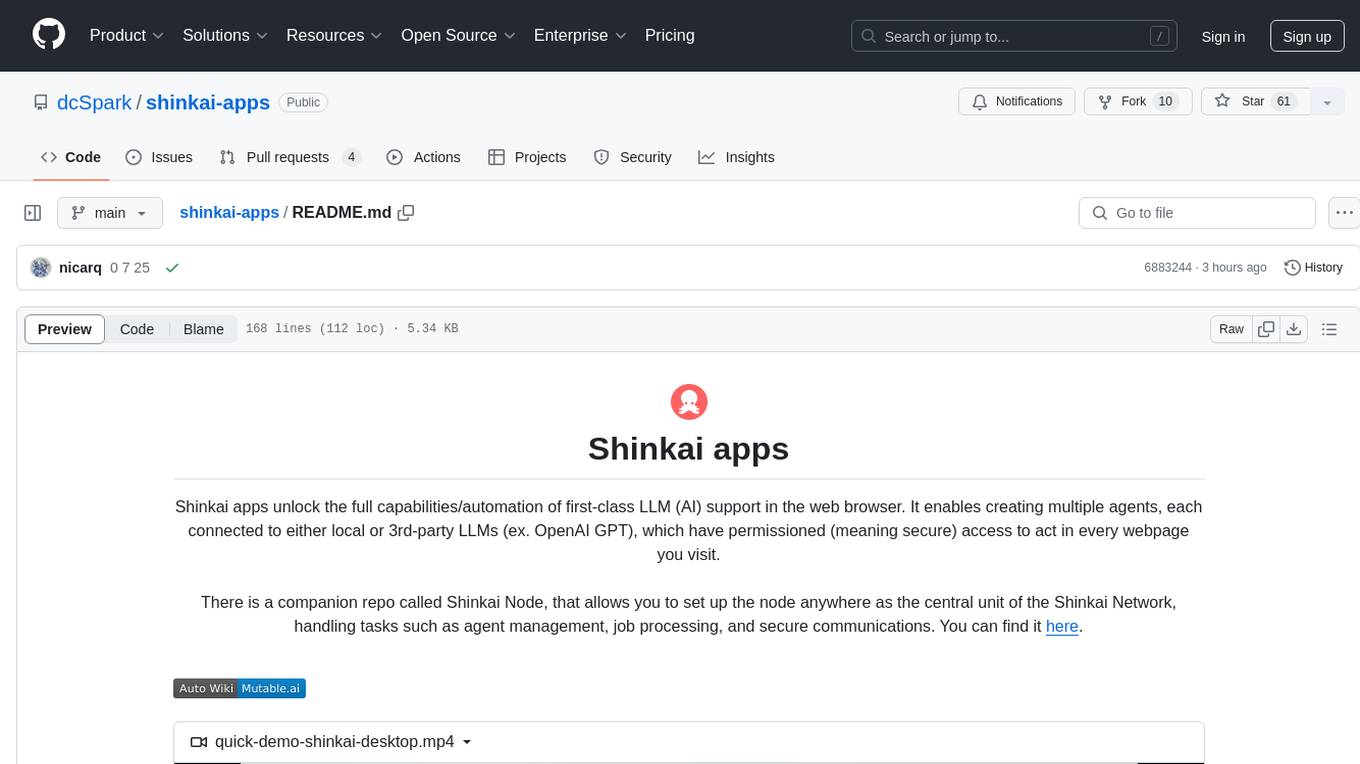
shinkai-apps
Shinkai apps unlock the full capabilities/automation of first-class LLM (AI) support in the web browser. It enables creating multiple agents, each connected to either local or 3rd-party LLMs (ex. OpenAI GPT), which have permissioned (meaning secure) access to act in every webpage you visit. There is a companion repo called Shinkai Node, that allows you to set up the node anywhere as the central unit of the Shinkai Network, handling tasks such as agent management, job processing, and secure communications.
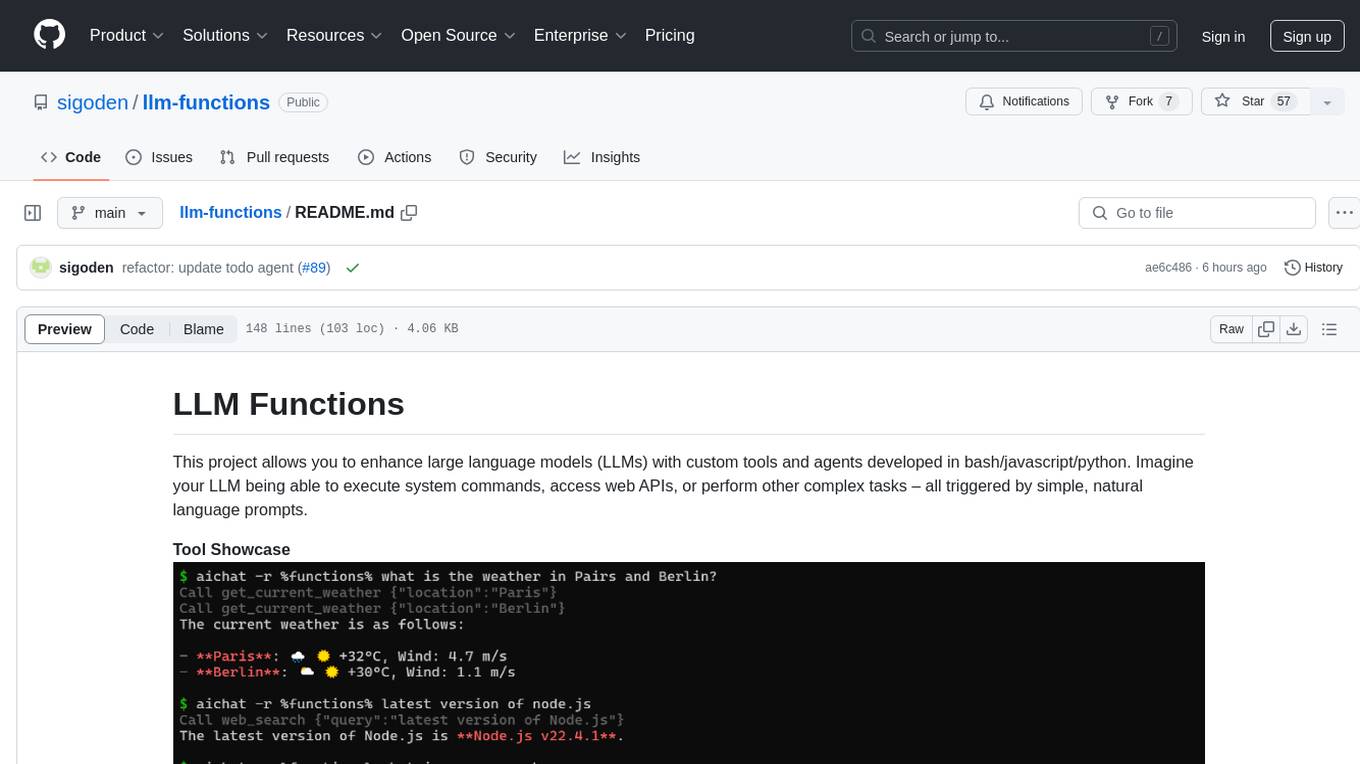
llm-functions
LLM Functions is a project that enables the enhancement of large language models (LLMs) with custom tools and agents developed in bash, javascript, and python. Users can create tools for their LLM to execute system commands, access web APIs, or perform other complex tasks triggered by natural language prompts. The project provides a framework for building tools and agents, with tools being functions written in the user's preferred language and automatically generating JSON declarations based on comments. Agents combine prompts, function callings, and knowledge (RAG) to create conversational AI agents. The project is designed to be user-friendly and allows users to easily extend the capabilities of their language models.
For similar jobs

sweep
Sweep is an AI junior developer that turns bugs and feature requests into code changes. It automatically handles developer experience improvements like adding type hints and improving test coverage.

teams-ai
The Teams AI Library is a software development kit (SDK) that helps developers create bots that can interact with Teams and Microsoft 365 applications. It is built on top of the Bot Framework SDK and simplifies the process of developing bots that interact with Teams' artificial intelligence capabilities. The SDK is available for JavaScript/TypeScript, .NET, and Python.

ai-guide
This guide is dedicated to Large Language Models (LLMs) that you can run on your home computer. It assumes your PC is a lower-end, non-gaming setup.

classifai
Supercharge WordPress Content Workflows and Engagement with Artificial Intelligence. Tap into leading cloud-based services like OpenAI, Microsoft Azure AI, Google Gemini and IBM Watson to augment your WordPress-powered websites. Publish content faster while improving SEO performance and increasing audience engagement. ClassifAI integrates Artificial Intelligence and Machine Learning technologies to lighten your workload and eliminate tedious tasks, giving you more time to create original content that matters.

chatbot-ui
Chatbot UI is an open-source AI chat app that allows users to create and deploy their own AI chatbots. It is easy to use and can be customized to fit any need. Chatbot UI is perfect for businesses, developers, and anyone who wants to create a chatbot.

BricksLLM
BricksLLM is a cloud native AI gateway written in Go. Currently, it provides native support for OpenAI, Anthropic, Azure OpenAI and vLLM. BricksLLM aims to provide enterprise level infrastructure that can power any LLM production use cases. Here are some use cases for BricksLLM: * Set LLM usage limits for users on different pricing tiers * Track LLM usage on a per user and per organization basis * Block or redact requests containing PIIs * Improve LLM reliability with failovers, retries and caching * Distribute API keys with rate limits and cost limits for internal development/production use cases * Distribute API keys with rate limits and cost limits for students

uAgents
uAgents is a Python library developed by Fetch.ai that allows for the creation of autonomous AI agents. These agents can perform various tasks on a schedule or take action on various events. uAgents are easy to create and manage, and they are connected to a fast-growing network of other uAgents. They are also secure, with cryptographically secured messages and wallets.

griptape
Griptape is a modular Python framework for building AI-powered applications that securely connect to your enterprise data and APIs. It offers developers the ability to maintain control and flexibility at every step. Griptape's core components include Structures (Agents, Pipelines, and Workflows), Tasks, Tools, Memory (Conversation Memory, Task Memory, and Meta Memory), Drivers (Prompt and Embedding Drivers, Vector Store Drivers, Image Generation Drivers, Image Query Drivers, SQL Drivers, Web Scraper Drivers, and Conversation Memory Drivers), Engines (Query Engines, Extraction Engines, Summary Engines, Image Generation Engines, and Image Query Engines), and additional components (Rulesets, Loaders, Artifacts, Chunkers, and Tokenizers). Griptape enables developers to create AI-powered applications with ease and efficiency.